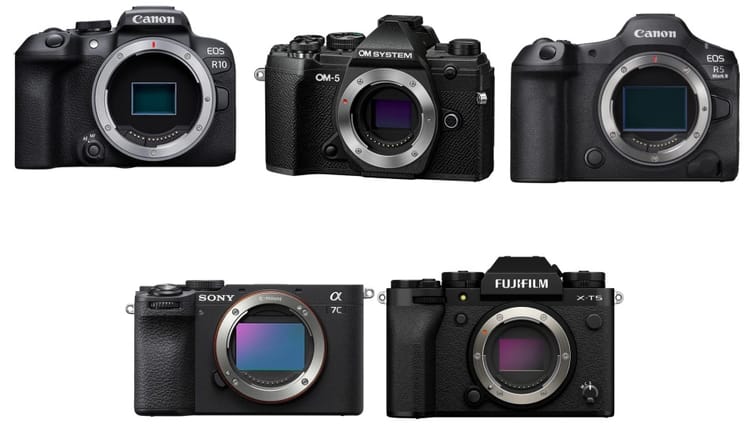Giclee Printing vs. Canvas Prints: Which Is Better for Your Art?
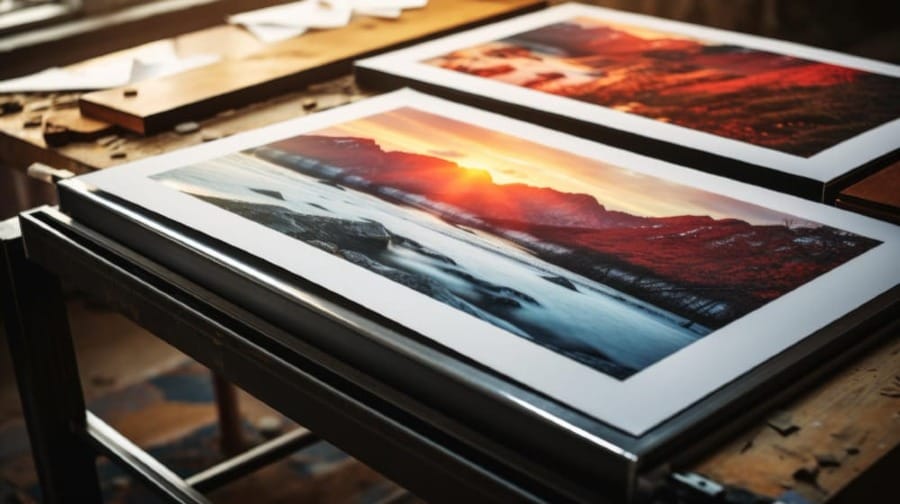
1. Introduction
In today’s art world, the demand for high-quality reproductions has surged as artists, photographers, and collectors seek ways to bring their work to broader audiences without compromising on detail and vibrancy. Two popular methods stand out for art reproduction: giclee printing and canvas printing. Each offers unique characteristics, making them well-suited for different types of artwork and aesthetic preferences.
Giclee printing is widely regarded as one of the best options for artists who want to replicate their work with exceptional color accuracy and longevity. This process involves using high-resolution inkjet printers and archival-quality inks, allowing for a nearly identical reproduction of the original piece, whether it’s a photograph, digital artwork, or traditional painting. Giclee prints are often framed under glass and displayed in galleries, catering to an audience that values fine art standards.
On the other hand, canvas prints have gained popularity for their classic, textured look, resembling traditional paintings. Unlike giclee prints, canvas prints often don’t require framing, giving them a versatile, ready-to-hang appeal. Whether your goal is a gallery-quality reproduction or a stylish wall piece, understanding the differences between giclee and canvas prints is crucial to choosing the best option for your art’s needs, display goals, and target audience.
2. What Is Giclee Printing?
Giclee printing is a high-quality printing method widely appreciated in the art and photography communities for its ability to produce detailed, vivid reproductions. Originating from the French word “gicler,” meaning “to spray,” the term refers to the fine spray of ink from specialized inkjet printers that make giclee prints unique. Unlike traditional offset printing, which relies on mechanical plates and rollers, giclee printing uses advanced inkjet technology that produces an image pixel by pixel. This digital approach results in exceptional color accuracy, depth, and clarity, making it the ideal choice for fine art prints, photography, and digital artwork.
The Giclee Printing Process
The process of giclee printing involves several precise steps to ensure the highest possible quality. First, a high-resolution digital file of the original artwork or photograph is created, typically at a resolution of at least 300 dots per inch (DPI). This resolution captures the finest details and textures, which is essential for maintaining the original work's integrity in reproduction. Once the digital file is prepared, it is printed using a specialized inkjet printer designed for fine art reproductions. These printers are equipped with a wider color gamut than standard inkjet printers, allowing them to produce a broader and more nuanced range of colors.
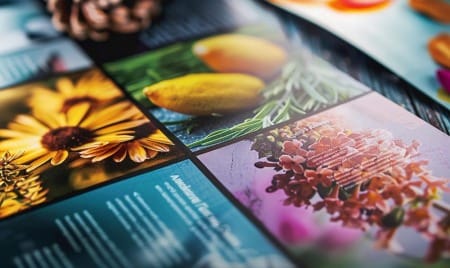
Archival Inks and Paper
A key aspect of giclee printing is its use of archival-quality inks and papers. Archival inks are specially formulated to resist fading, ensuring that the print retains its color and vibrancy for decades—sometimes even up to a century when properly cared for. These inks are pigment-based rather than dye-based, which gives them superior durability and colorfastness. Additionally, giclee prints are often made on acid-free, 100% cotton or rag paper, which prevents yellowing and deterioration over time. This commitment to longevity and quality makes giclee printing a preferred choice for artists and collectors looking for museum-quality reproductions.
Key Benefits of Giclee Printing
Giclee printing offers a level of detail and color accuracy that is difficult to achieve with other printing methods. The result is a print that closely mirrors the original artwork in both look and feel, providing an excellent option for artists who wish to sell limited edition prints that are faithful to the original. Collectors also appreciate giclee prints for their archival qualities, knowing that their investment will endure for years to come.
By combining high-resolution digital imaging, archival inks, and fine art paper, giclee printing delivers an unparalleled level of quality, making it a top choice for artists, photographers, and collectors alike.
3. What Are Canvas Prints?
Canvas prints are a popular medium for displaying artwork and photographs, known for their textured, painterly look that adds depth to any piece. Unlike traditional framed prints, canvas prints are typically stretched over a wooden frame, giving them a clean, modern finish that doesn’t require additional framing. This style of display lends itself well to home décor, as it has a ready-to-hang appeal and can be produced in a variety of sizes, from small accent pieces to large, wall-spanning artworks.
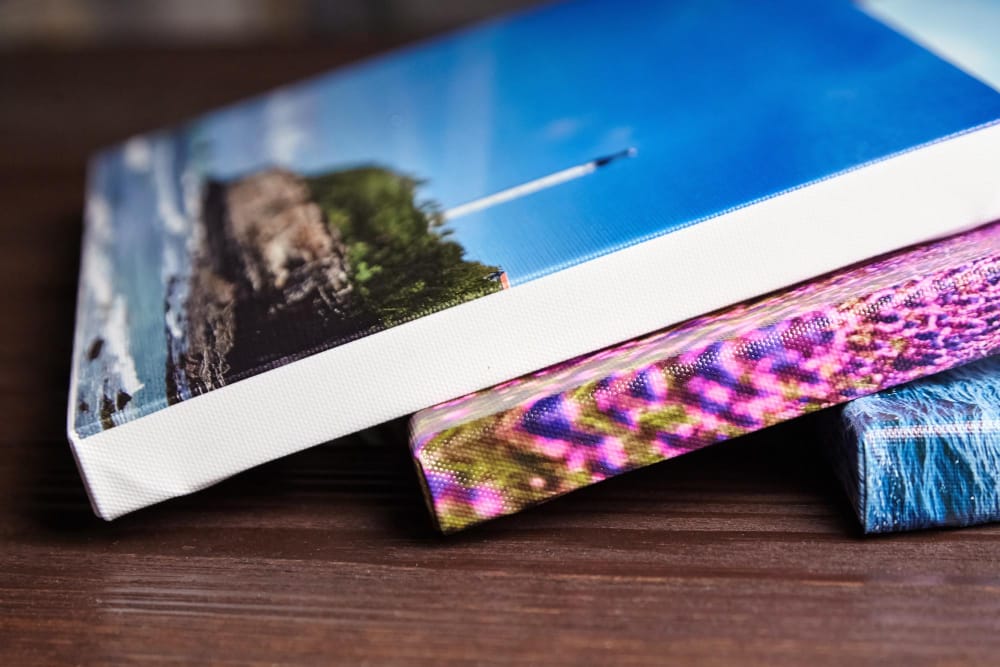
The Canvas Printing Process
The process of creating a canvas print involves printing an image directly onto a canvas substrate using inkjet or dye-sublimation printers. While similar in printing technology to giclee printing, canvas printing generally uses a coarser, fabric-like material that introduces a unique texture to the image. This texture can soften fine details and give the print a more artistic, almost painted appearance, making it well-suited for images like landscapes, portraits, or other traditional art that benefits from a slightly less precise, more textured surface.
Once the image is printed onto the canvas, it is stretched and wrapped over a wooden frame, a process known as gallery wrapping. The edges of the canvas are often extended or mirrored around the sides of the frame, allowing for a seamless presentation that doesn’t require additional framing. This format is popular for large pieces that make a bold visual statement.
Benefits of Canvas Prints
Canvas prints are an affordable and versatile option for reproducing artwork or photography, making them accessible to a broader audience. Their textured surface gives them a unique aesthetic appeal, especially for images that suit a more traditional, painterly look. Unlike giclee printing, which focuses on meticulous detail and color accuracy, canvas printing adds an element of artistic interpretation to the image, softening details slightly while creating a visually impactful display piece.

Overall, canvas prints are an excellent choice for casual art displays, home décor, and for anyone looking to add a textured, artistic element to their space without the need for heavy framing or glass.
4. Comparing Giclee and Canvas Prints: Key Differences
When choosing between giclee and canvas prints, understanding the key differences can help you decide which option best suits your artwork and display needs. While both methods have their unique advantages, they vary significantly in terms of materials, visual quality, durability, and overall aesthetic. Here’s a closer look at how giclee printing and canvas printing compare in these key aspects.
Material and Texture
The choice of material is one of the most noticeable differences between giclee printing and canvas printing. Giclee prints are typically created on high-quality, acid-free, 100% cotton or rag paper. This paper is smooth or subtly textured, allowing the print to capture every detail with clarity and precision. In contrast, canvas prints are made on a coarser, woven fabric, usually stretched over a wooden frame. This textured surface adds depth to the image but can slightly blur fine details, lending the print a softer, more painterly look. Artists seeking fine detail often prefer giclee for its smooth surface, while those wanting an artistic, textured effect may lean toward the canvas.
Color Accuracy and Detail
Color fidelity and detail reproduction are areas where giclee printing excels. Because it uses archival-quality, pigment-based inks, and high-resolution digital files, giclee printing produces prints with exceptional color accuracy and detail. This makes it ideal for photographic work or digital art, where precise color matching is crucial. Canvas printing, while still capable of good color reproduction, often sacrifices some precision due to the textured surface and, in some cases, dye-based inks. This difference can be important for artists or photographers who want their work to maintain exact colors and fine details.

Durability and Longevity
When it comes to longevity, both giclee and canvas prints can be durable if produced with quality materials. Giclee prints use archival inks and paper, which are designed to resist fading for up to 100 years or more under proper care. This makes them suitable for collectors or artists interested in limited edition prints that retain value over time. Canvas prints, however, can vary in durability depending on the inks and canvas material used. High-quality canvas prints with UV-resistant inks can last for decades, but they are generally not as archival as giclee prints and may fade more quickly, especially in direct sunlight.
Aesthetic Appeal
The overall aesthetic is another important factor. Giclee prints often look modern and polished, ideal for gallery displays or collectors seeking a high-quality reproduction that closely resembles the original artwork. The smooth surface allows for crisp lines, vibrant colors, and high detail, making it a top choice for photographers and digital artists. Canvas prints, by contrast, provide a more traditional or rustic look. The textured surface adds depth and a sense of dimension, which can be very appealing for home décor or casual displays, especially with subjects like landscapes or portraits.
Cost Considerations
The cost of producing each type of print also varies. Giclee prints, due to their use of archival materials and high-resolution printing technology, are generally more expensive than canvas prints. However, the investment can be worthwhile for artists looking to produce limited edition prints with longevity. Canvas prints are usually more budget-friendly, offering an accessible way to display artwork in large formats without the need for additional framing.
In summary, giclee printing and canvas printing both offer unique benefits, but the choice largely depends on the intended use, display environment, and aesthetic preference of the artist or buyer.
5. When to Choose Giclee Printing
Selecting the right printing method can significantly impact the way your artwork or photography is perceived. Giclee printing is ideal for artists, photographers, and collectors who prioritize precision, color accuracy, and long-term preservation. Here are some scenarios where giclee printing is the most suitable choice for reproducing art.
Ideal for Fine Art and Photography
Giclee printing is often the preferred choice for fine artists and photographers who want to produce high-quality, collectible prints. The process utilizes high-resolution digital files and pigment-based inks, which offer superior detail and accuracy compared to other printing methods. This level of precision is especially important for photography and digital artwork, where even minor changes in color or detail can alter the mood and quality of the piece. Artists who work with intricate details, subtle gradients, or vibrant colors find that giclee printing faithfully reproduces the nuances of their original work, capturing the exact look they envisioned.

Perfect for Limited Edition and Collectible Prints
When artists create limited edition prints, quality and longevity are essential to maintain the value of each piece. Giclee printing is well-suited for this purpose due to its use of archival-quality inks and acid-free paper. These materials ensure that each print retains its vibrancy and quality over time, which is particularly important for collectors. A well-made giclee print can last over a century if cared for properly, offering peace of mind to buyers investing in art. For artists who sell limited editions, giclee printing provides a professional, museum-quality reproduction that meets the standards of galleries and collectors.
Suitable for High-End Display Environments
If your artwork is intended for galleries, exhibitions, or upscale spaces, giclee printing’s refined quality and clarity make it a standout choice. The smooth, fine art paper used in giclee printing creates a polished, sophisticated appearance that complements modern, professional settings. Whether displayed in galleries, museums, or personal collections, giclee prints offer a professional finish that enhances the perceived value of the work.
Recommended for Artists Who Value Archival Quality
Artists who view their work as a long-term legacy often choose giclee printing for its archival properties. Because it uses pigment-based inks and durable, acid-free paper, giclee printing produces prints that can be handed down or displayed for generations without the risk of significant fading. This makes it an excellent option for artists or photographers looking to ensure their work remains vibrant and true to the original vision for years to come.
6. When to Choose Canvas Prints
Canvas prints are a versatile, cost-effective, and stylish option for reproducing artwork and photographs. While giclee printing offers fine detail and archival quality, canvas prints have their own unique appeal and are well-suited for specific types of artwork and display preferences. Here are some situations where choosing canvas prints might be the ideal option.
Ideal for Casual and Home Décor Displays
Canvas prints are a popular choice for home décor due to their modern and minimalist look. The canvas texture gives them a slightly rustic and painterly feel, which suits a wide variety of home styles, from contemporary to traditional. Because canvas prints don’t require framing, they’re ready to hang right out of the box, making them a convenient choice for people looking to add art to their walls without additional framing costs. This makes canvas prints a great option for creating a relaxed, gallery-style display in homes, offices, or casual spaces.
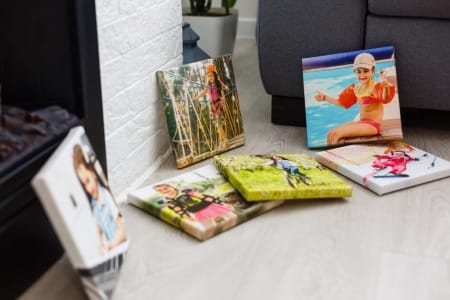
Suitable for Larger, Bold Artwork
Canvas prints work exceptionally well for larger pieces that are meant to make a bold visual statement. The material’s texture and durability allow for sizable prints without the risk of warping or sagging over time. Large canvas prints can serve as focal points in rooms, creating a striking presence that adds depth and dimension to a space. Unlike giclee printing, which is typically used for more detailed, intricate works, canvas printing is perfect for larger, simpler compositions like landscapes, abstracts, and bold color pieces, where the texture adds to the artwork’s overall impact.
Perfect for a Painterly, Artistic Look
The textured surface of canvas mimics the feel of traditional paintings, making it a popular choice for artwork that benefits from a more painterly look. This quality can enhance the aesthetic of pieces like portraits, nature scenes, and impressionistic styles, where a softer, blended appearance is desirable. Unlike the smooth paper used in giclee printing, canvas provides a tactile surface that gives the artwork a timeless, classic appeal.
Cost-Effective for Budget-Conscious Projects
Canvas prints are often more budget-friendly than giclee prints, which makes them an accessible choice for those seeking to produce larger quantities or display art in informal settings. While giclee prints are known for their museum-quality standards, canvas prints are an excellent alternative for projects where cost-effectiveness is important, such as home decorations, business interiors, or art for commercial spaces. This affordability allows artists, photographers, and consumers to create large wall displays and custom galleries without breaking the bank.

In summary, canvas prints are ideal for artists and consumers looking for a durable, visually impactful option that complements a wide range of interior styles. Whether for a bold statement piece, a rustic-inspired gallery wall, or a budget-friendly art display, canvas prints offer a unique aesthetic that is both timeless and accessible.
7. Cost Comparison
When deciding between giclee printing and canvas printing, understanding the cost differences can be an essential factor, especially for artists, photographers, and consumers who are working within a budget or producing art for specific markets. Each printing method involves different materials, production processes, and quality levels, all of which impact the final price. Here’s a breakdown of the cost considerations for both giclee and canvas prints.
Material Costs and Quality
Giclee printing typically uses high-quality, archival-grade materials, which contribute to its higher cost. Giclee prints are made with acid-free, 100% cotton or rag paper and pigment-based inks, both chosen for their longevity and color fidelity. These materials ensure the print remains vibrant and fade-resistant over time, making it an investment in quality. However, these premium materials add to the overall production cost, which is often passed on to the buyer. For artists aiming to sell limited edition prints or high-end reproductions, the extra cost of giclee printing is often justified by its quality and archival value.
In contrast, canvas prints are generally less expensive because they use standard inkjet or dye-based inks and canvas material that is more economical to produce. While some high-quality canvas prints do use UV-resistant inks for enhanced durability, they typically do not meet the archival standards set by giclee printing. The textured canvas material itself is also less costly than fine art paper, contributing to a more budget-friendly product. This makes canvas prints a popular choice for buyers seeking a balance of quality and affordability.

Labor and Production Processes
The production process for giclee printing is more intensive and requires precise color management and high-resolution digital files. The specialized printers used in giclee production are capable of rendering fine details and a broader color gamut, but they operate more slowly and require frequent calibration. This level of care in the printing process further raises the price, as it takes more time and expertise to create a giclee print than a standard canvas print.
Canvas prints, on the other hand, involve a simpler production process. Once the image is printed onto the canvas, it’s typically stretched and wrapped around a wooden frame, a process that is faster and involves fewer technical steps. While this streamlined process allows for lower pricing, it does not capture the level of detail or color fidelity achievable with giclee prints.
Long-Term Value
When comparing the long-term value, giclee printing is often seen as a worthwhile investment due to its archival quality and durability. For artists and collectors looking for lasting prints that can retain their quality for decades, the higher upfront cost of giclee printing is balanced by the print’s extended lifespan. Canvas prints, while durable and appealing in aesthetic, may fade faster over time, especially if exposed to direct sunlight or high humidity.
In summary, while giclee prints come at a higher cost due to their premium materials and meticulous production, they offer superior quality and longevity. Canvas prints are more affordable, making them a great option for decorative purposes and larger displays where budget-friendly options are prioritized.
8. Choosing the Right Option for Your Art
Selecting between giclee printing and canvas printing ultimately depends on your specific artistic needs, display preferences, and budget. Each method offers distinct benefits, and choosing the right one involves considering factors like the type of artwork, the intended display environment, and the preferences of your audience or buyers. Here’s a guide to help you decide which option aligns best with your goals.
Consider the Type of Artwork
The type of artwork you’re reproducing can play a significant role in your choice. Giclee printing excels at capturing fine details, color gradients, and subtle nuances, making it ideal for photography, digital art, and intricate paintings where accuracy is crucial. Photographers, for example, may prefer giclee printing to ensure the colors and details of their images are faithfully reproduced on smooth, fine art paper. Similarly, artists who create detailed digital work or complex, colorful illustrations will find that giclee printing’s high-resolution quality preserves the integrity of their original piece.
Canvas printing, with its textured surface, works well for artwork that benefits from a slightly softer, painterly look. Landscapes, portraits, and abstract pieces are particularly suited to canvas, where the texture adds depth and character. If your artwork is designed to evoke a more traditional or rustic aesthetic, canvas may be the right choice.
Think About Display Environment
The display environment also influences the decision between giclee and canvas prints. Giclee printing is often chosen for gallery and museum settings or for high-end private collections, where preservation and professional presentation are paramount. Giclee prints are usually framed under glass or acrylic, which provides additional protection and enhances the print’s archival qualities. This makes them ideal for settings where the print is meant to last and be preserved as a collectible item.
Canvas prints, on the other hand, offer a casual, ready-to-hang solution that is perfect for home décor, offices, or spaces where ease of display is valued. Without the need for framing, canvas prints have a modern, clean look that blends seamlessly into various interiors. Their lightweight nature and flexibility in size make them a good option for larger, bold displays.
Match Your Audience’s Preferences and Budget
Finally, consider your audience or buyers. If you’re creating limited edition prints for art collectors or high-end buyers, they may expect the quality and longevity of giclee prints, even if it comes at a higher price. Giclee printing is often seen as an investment in quality, making it ideal for artists selling premium prints.
For casual art buyers or those on a budget, canvas prints offer an affordable and visually appealing alternative. If you’re targeting consumers who want large, impactful pieces for decoration, canvas prints provide a cost-effective option that still delivers a strong visual presence.
In summary, the choice between giclee and canvas prints depends on your artwork’s style, display goals, and audience expectations. By weighing these factors, you can select the printing method that best enhances and complements your artistic vision.
9. Conclusion
In the end, choosing between giclee printing and canvas printing comes down to your artistic goals, the intended display setting, and budget considerations. Giclee printing is ideal for artists and photographers who value precise color accuracy, fine detail, and archival quality, making it an excellent choice for limited edition prints, high-end reproductions, and gallery displays. Its commitment to longevity and vibrancy ensures that each piece remains true to the original for years, providing a level of professionalism that collectors and art enthusiasts appreciate.
Canvas prints, on the other hand, are versatile and accessible, offering a textured, painterly look that fits well in home décor and casual environments. They provide an appealing balance of affordability and aesthetic impact, making them popular for larger, statement pieces where texture enhances the artwork’s appeal.
Both options have unique strengths, allowing artists to choose based on their specific needs. Whether aiming for museum-quality precision or a relaxed, ready-to-hang aesthetic, understanding the key qualities of each printing method will guide you in making the best choice for your artwork.

